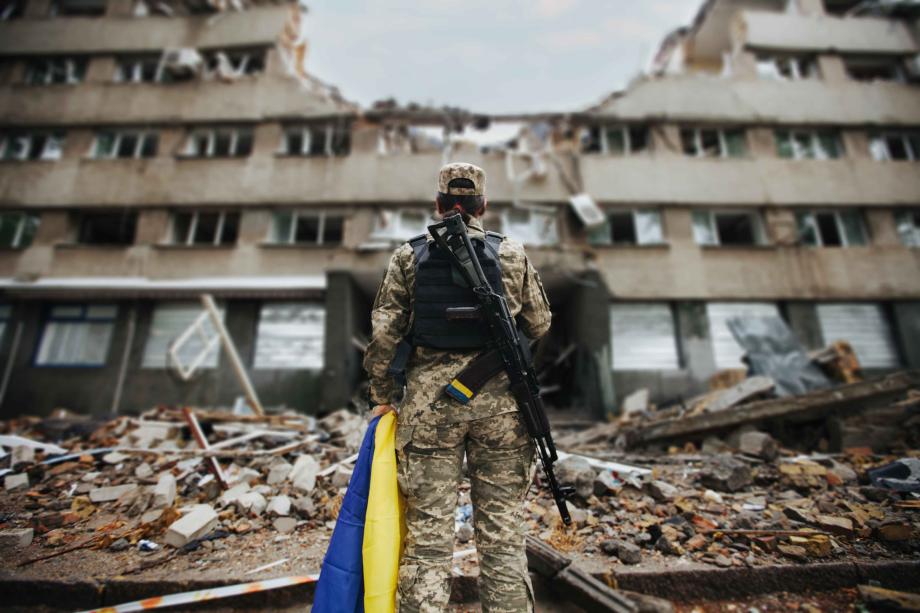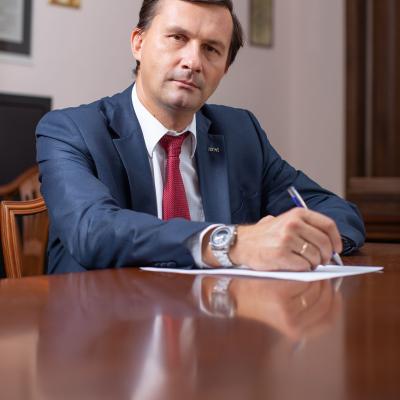Nine Steps Towards Post-War Europe

Eight months of Russia’s full-scale war against Ukraine has provided extensive evidence of complete neglect of any written norms and unwritten habits of international co-existence by Putin’s clique. The intensification of attacks on civil energy infrastructure before winter in mid-October proved the terrorist nature of the aggressor state, making it an outcast in the global community. Already it is no any possibility to assume the recover of pre-war status quo in Europe, where Russia played its role as substantial economic and political stakeholder.
This understanding is conditioning more and more decisive policies of military and financial support for Ukraine. However, getting on the road to a new post-war Europe with practically guaranteed security and sustainable development requires the vision of this road. The lack of a commonly accepted vision of Europe’s postwar design causes disappointment and inconsistency in withstanding the aggressor, lays the ground for political speculations and hybrid impacts, and prevents consolidating the global community’s steps towards one of post-war composition. Many stakeholders are still unable to overcome their irrational expectations of returning to business as usual immediately as the war finishes, regardless of its outcome.
For now, allies mainly rely on sanctions intended to stop the aggressor. Europe is paying a notably high price for this war, also suffering from implementing waves of sanctions, which are not effective enough to achieve their goal. This also leads to their discrediting, which impedes consistent and more profound sanction policies. Sanctions are a long play. In the meanwhile, each ongoing day of war costs Ukrainian lives, the deterioration of the humanitarian situation, and material losses.
Beyond any doubt, the policy of sanctions should be continued and fostered. However, allies must be conscious that sanctions’ effectiveness is limited and, on their own, are incapable of radically affecting the war or defeating Russia, through worsening the latter’s economic capacity.
To reach any changes Putin or his clique’s minds in this way is impossible. February 24 proved that this regime could not modernise itself in an evolutionary way. Under pressure, it only tends to escalate aggression. Expectations of obtaining any revolutionary changes also seem to be groundless. Both hypothetical “palace coup” and any social revolution face a lack of alternative leaders and a vision of alternative social and political models.
It would be naïve to transfer the experience of sanctions’ impact on small and medium-sized countries to the case of Russia. Firstly, Russia is a large country with substantial economic and natural potential, enabling the vast field of import substitution and other domestic drivers of the national economy. In fact, Putin’s announced mobilisation has caused much more harm to the national economy - strongly accelerating its final countdown. Secondly, most of Russia’s population still has relatively low living standards. Thus, the potential endurance of people within limitations caused by sanctions is very high. Thirdly, the truth is that Russia is not left alone – different countries have continued economic and even military communications with Russia, significantly mitigating the sanctions’ impact.
Thus, sanction policies should be radically enforced with a range of complementary approaches, adding direct pressure on the aggressor by building institutional patterns and alternatives, directing the processes to achieve a desired post-war Europe, and covering partners’ losses with proper win-win strategies. These policies should be targeted to different stakeholders, adequately tailored and strategised within nine main steps of three policy tracks.
Track I. Ukraine
Step One. In the shortest term, implement the legislative framework to extract the Russian assets under sanctions. These can be rapidly redirected to cover urgent recovery and humanitarian causes in Ukraine and used as compensation for allies’ spending for Ukraine’s economic, military and humanitarian support. The total amount of these funds is estimated by different sources to be between USD 300-400 bln.
Step Two. Rapidly prepare and implement the joint allies’ program of economic support of Ukraine in the war period, although some experts prefer the term “Economic Rammstein”. The program should focus on firm scheduling financial support for the coming year; urgent recovery of attacked energy and transport infrastructures and social infrastructure in deoccupied territories.
Step Three. Based on multilateral consultations and the experience of “new” EU members, prepare Ukraine’s roadmap to EU membership, including provision of the pre-accession funds and implementation of promised fast-track accession procedure. In this roadmap, the EU should actively engage in institutional changes in Ukraine. As its EU candidate status advances, Ukraine should become an important contributor to long-term resilience and comprehensive progress within Europe and prove its important prospective role in pragmatically addressing existing and future problems of a united Europe.
Track II. Europe
Step One. Jointly prepare the vision of a new postwar Europe, which shows the way out of the crisis, different from the illusory recovery of business-as-usual. Businesses and people should see practically acceptable alternatives and prospectives, including solving the bottlenecks of the nearest winter period. Based on this vision, national governments should communicate with stakeholders, address the most harnessed entities, and identify their roles in the roadmap of changes. Ukraine should be “put on the map of Europe” – engaging in the European community’s key strategic problem solving, where possible, substituting the gaps left by Russia.
Step Two. Prepare a unique multinational strategic framework (Marshall Plan 2.0) to define a common European policy concerning Ukraine and directed to institutional renewal within Ukraine, premised on European principles. The plan should be prepared in close collaboration with Ukraine but based on the guidance of the EU. It should ensure that spheres and projects of mutual interest between businesses in Ukraine and the EU are pursued by the recovery framework and beyond, determine tasks for European institutions, and, finally, re-establish the drivers of economic development across the European continent. Including European business and civic stakeholders in cooperation with Ukraine will contribute to their powerful support as advocates for Ukraine’s accession to the EU. These stakeholders will be able to lobby and press the EU bureaucracy to promote a fast-track accession procedure and provide adequate pre-accession support.
Step Three. Design a new credible pan-European security system which substitutes the current discredited one and embraces Ukraine as a candidate and potential EU member. This system can be based on the Kyiv Security Compact, presented by A.F. Rasmussen and A. Yermak in mid-September.
Track III. Russia
Step One. Specify and communicate the conditions for the cancelling or gradual removal of sanctions. This should end the expectations that sanctions will be over just as the war ends. The conditions sine qua non should be Ukraine’s full regaining of its territories, even those occupied since 2014, presenting a schedule and guarantees of reparations, implementing security guarantees, political atonement of the regime, and personal responsibility of those guilty of war crimes.
Step Two. Reach an understanding of modern Russia to form the desired vision of its postwar composition and possible ways towards it. It is essential to escape the poisoning legacy of former Sovietology, which still often leads to wrong assessments and forecasts. The correct idea about contemporary society in Russia and its driving interests should allow the suggestion of a new non-imperial identity as a basis for potential changes in the country over medium- and long-term periods.
Step Three. Based on the above, envision the future strategy of recommunicating a renewed Russia in the global economy. Despite any understandable emotions of the current time, trying to keep Russia as a marginal territory in international isolation is the worst idea. Germany, defeated in WWI, bred Hitler and unleashed WWII. Fortunately for Europe, the Marshall Plan winning over the Plan of Morgenthau after WWII returned Germany into the civilisational mainstream and guaranteed long-lasting peace in Europe. The learned historical lessons show the benefits of win-win over zero-sum strategies.
The “remapping” of post-war Europe on a reciprocal basis, aimed at a progressive post-industrial sustainable future, is the global community’s best possible response to Putin’s Russia’s gloomy attempts to revise European borders to please its regressive ambitions of asymmetric and destructive regional domination.

Distinguished Research Fellow for Ukraine and Eastern Europe Programme